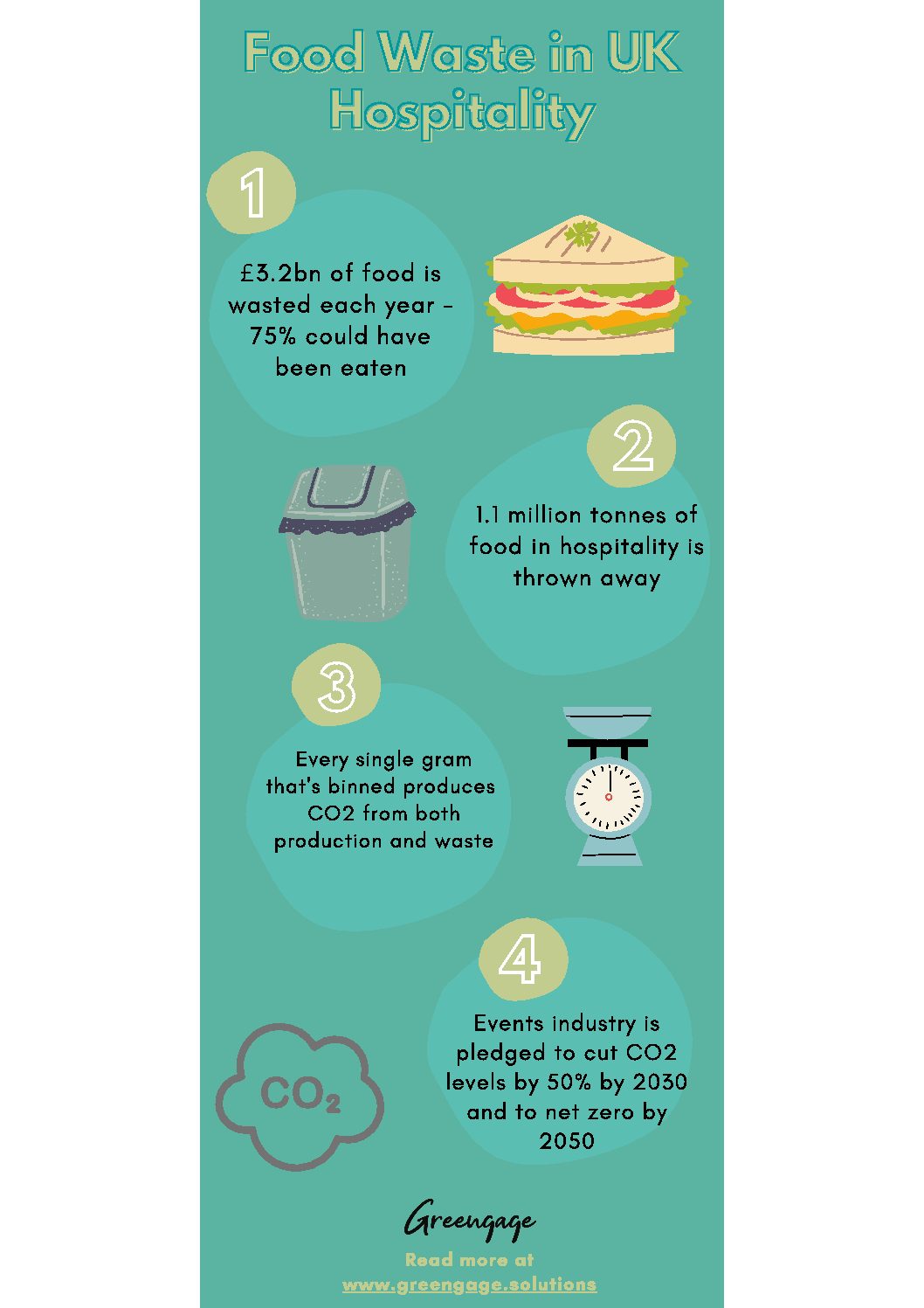Greengage Solutions has linked up with some of the top UK sustainable events venues to form the Greengage Platinum Inner Circle with the aim to examine key challenges relating to sustainability in events and meetings and to share best practice ideas with others towards a greener approach.
The Platinum Inner Circle has identified that there is a need to find ways to minimise waste in the first place rather than just focusing on how to deal with waste produced. They want to change attitudes so that food is treated as a precious commodity rather than seen as something that is inevitably wasted at events.
To address these challenges, the Inner Circle has drawn up a list of 8 practical tips based on the target, measure and act approach advocated by WRAP (Waste & Resources Action Programme) – the charity that campaigns to reduce food waste.
1. SET TARGETS With the principle ‘what gets measured gets done’, set a target for food waste reduction as a starting point – maybe 20% over an initial four-week period.
2. IDENTIFY AND MEASURE Track and record waste based on the types of food waste: food preparation, spoilage, left on the plate and excess produced. Guardians of Grub have an excellent tracking sheet which will reveal the positive impact of any changes. Greengage’s EVENTsmart carbon calculator can measure the food carbon footprint of individual events.
3. GET STAFF ON BOARD Lead from the top and gain staff buy-in by explaining the sustainable and cost benefits of food waste reduction programmes. Then invite active participation and share progress updates.
4. ORDER SMARTER Check stock regularly and purchase only what is needed. When storing food, put the newest items at the back to make sure older items are used first. When selecting an external caterer work with one that allows last minute order changes before an event to allow for fluctuations in delegate numbers.
5. CREATE SMARTER MENUS Try to cater for most people to avoid too many variations to suit dietary requirements. Create ‘Chef Specials’ prepared from excess ingredients. Zero waste dishes are gaining in popularity – utilising ingredients normally disposed of such as stalks, stems and cut offs to make items such as Indian cauliflower fritters.
6. REDUCING NUMBER AND SIZE OF PORTIONS Over catering is one of the prime reasons why so much food is thrown away. Take the plunge and think about serving 10-12% less food than booked. Don’t serve everything – allow people to ask for more if they want it. Chips and bread are two of the biggest items to be ‘over catered’ while Bento box lunches are great as the portion size is totally defined.
7. ENGAGE CUSTOMERS Good communication will secure buy in throughout the client/supplier chain including client event organisers, event delegates, venue sales teams, chefs or caterers, food and beverage suppliers. Be up front about what you are doing and people will understand and see the positives. This will require a change of mindset since most people are used to an array of food and drink options for every meal and break.
8. DEALING WITH LEFT OVER FOOD Food is more difficult to reuse or distribute if already on the table, so it is better to keep food back until required. Some catering companies will take back excess food. Alternatively work with charitable organisations who can take left over food. What cannot be repurposed should be sent to a recycling plant that converts leftover food into power. Some venues are investing in their own food composters or compactors.
The Inner Circle membership includes representatives from 15 Hatfields, London; Church House, Westminster; Friends House, Euston; Kia Oval, Vauxhall; Oxford Brookes University, Oxford; Pan Pacific Hotel, London City; Woodhaven Space, Woking; and Wyboston Lakes, Bedfordshire.
Andrew Perolls, CEO of Greengage Solutions, comments: “At Greengage our aim is to support organisations in their journey towards environmental sustainability.
“When talking to venues, it became clear that they face a key challenge because food waste occurs at multiple points in the process chain: in food preparation, spoilage with out of date or damaged food, what is left on the plate and what is not eaten such as what is left on a buffet.
“So we invited some of our clients to come together to form the Platinum Inner Circle where we can explore practical steps to achieve zero waste. We’re delighted to see our members putting ideas into practice and look forward to hearing about their successes.”
Global and national statistics reveal:
• One third of all food goes to waste, worldwide
• An area the size of China is used to grow food that is never eaten
• Nearly 1 billion starving people could be fed on less than one quarter of the food wasted in the US, UK and European Union
• Food waste accounts for 6% of global greenhouse emissions (three times that of aviation)
• In the UK food waste represents 20 million tonnes of emissions every year.
• Every day in the UK we throw away 900,000 bananas, 1.2 million tomatoes and 20 million slices of bread
• One banana skin can generate enough power to charge a mobile phone if sent for anaerobic digestion, with other food waste.
Within the hospitality and food service industry:
• £3.2 billion of food is wasted each year – and 75% could have been eaten
• 18% of food in this sector is thrown away (amounting to 1.1 million tonnes)
• Every single gram that goes in the bin has an environmental cost, with greenhouse gases resulting from both production and waste.
• The events industry is pledged to cut CO2 levels 50% by 2030 and to reach net zero by 2050.
For more information visit www.greengage.solutions.












